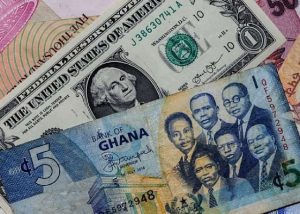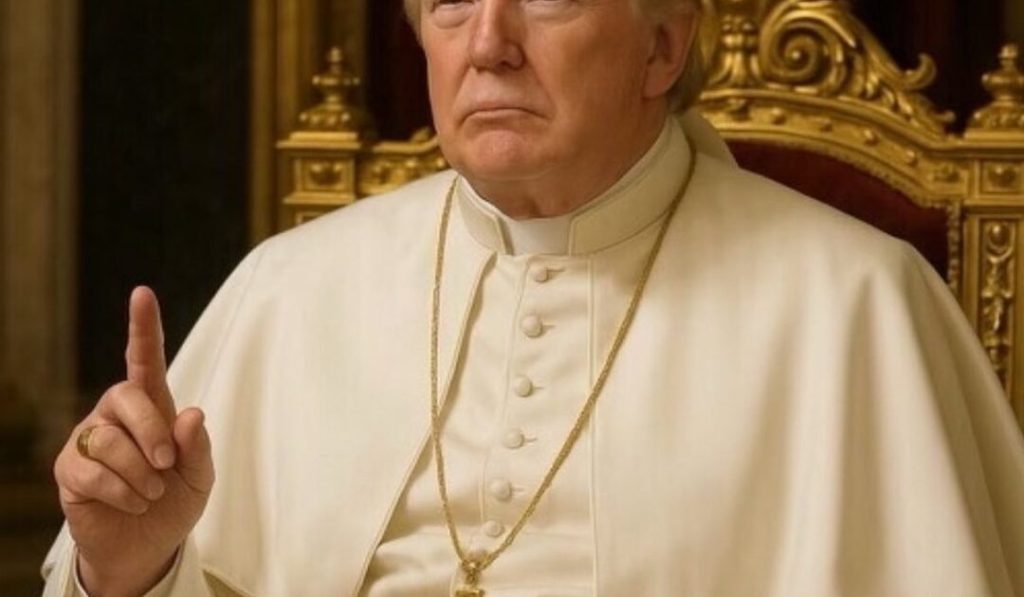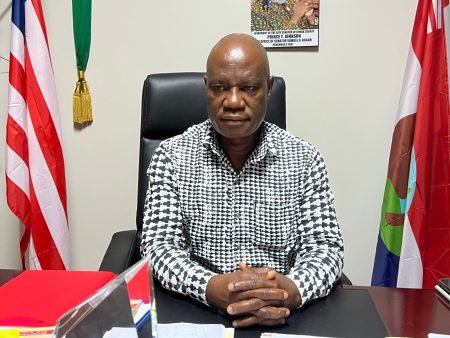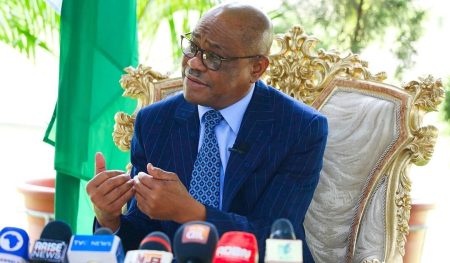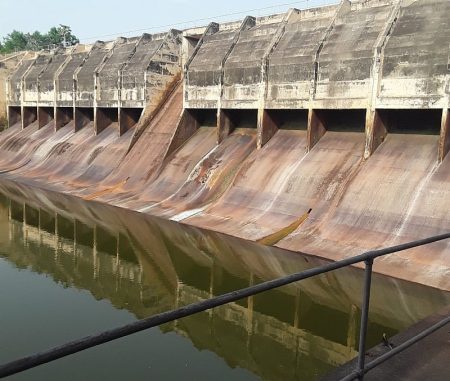The internet erupted in a maelstrom of reactions, ranging from amusement to outrage, after former United States President Donald Trump shared a seemingly AI-generated image of himself garbed as the Pope on his social media platform, Truth Social. The image, which quickly spread like wildfire across the digital landscape, depicts Trump in full papal regalia, complete with flowing white robes, a prominent golden crucifix, a mitre, and a single finger raised skyward in a gesture reminiscent of papal blessings. The image’s dissemination was further amplified when the White House’s official X account (formerly Twitter) reposted it on Saturday, fueling the already fervent online discourse and sparking a debate about the appropriateness and implications of the image.
The timing of the image’s release was particularly intriguing, coming just days after Trump, in a seemingly lighthearted exchange with reporters, expressed his desire to be the Pope. When questioned about his preference for the next head of the Catholic Church, Trump quipped, “I’d like to be pope, that would be my number one choice.” This seemingly off-the-cuff remark, delivered with Trump’s characteristic blend of humor and seriousness, further fueled speculation about his intentions and the message he intended to convey with the AI-generated image. The comment also preceded the conclave convened to elect Pope Francis’ successor, who passed away on April 21st. While Trump refrained from explicitly endorsing any particular candidate, he alluded to “a very good” cardinal in New York, widely speculated to be Archbishop Timothy Dolan, a figure known for his conservative theological views, particularly his staunch opposition to abortion.
The convergence of Trump’s papal aspiration, the AI-generated image, and his attendance at Pope Francis’ funeral—his first international appearance since leaving office—created a complex and multi-layered narrative. The image itself, with its hyperrealistic depiction of Trump in papal vestments, became a focal point for discussions about the evolving intersection of politics, religion, and technology. Some interpreted the image as a harmless jest, a playful exploration of an alternate reality where Trump occupies the highest position in the Catholic Church. Others viewed it as a more calculated move, a strategic deployment of imagery intended to provoke reactions, generate publicity, and perhaps even appeal to specific segments of the population.
The image’s dissemination on Truth Social, Trump’s own social media platform, added another dimension to the unfolding story. Truth Social, launched by Trump after his ban from mainstream platforms like Twitter and Facebook, has become a central hub for his communication with supporters and a platform for disseminating his views and pronouncements. By sharing the image on Truth Social, Trump bypassed the editorial filters and fact-checking mechanisms of traditional media outlets, ensuring its rapid and unmediated distribution to his followers. The subsequent repost by the White House’s official X account further amplified the image’s reach, bringing it to the attention of a wider audience and intensifying the ensuing debate.
The reactions to the AI-generated image were as diverse as the online community itself. Some found the image humorous, appreciating the absurdity of Trump in papal garb. They saw it as a playful satire, a momentary escape from the often-serious world of politics. Others, however, were less amused. They criticized the image as disrespectful, inappropriate, and potentially offensive to Catholics and religious sensibilities. Some commentators expressed concern about the potential for such images to be misinterpreted or misused, particularly in the context of an increasingly polarized political climate. The image also raised questions about the ethical implications of using AI to create realistic depictions of individuals in positions of power, raising concerns about the potential for manipulation and the spread of misinformation.
Beyond the immediate reactions of laughter, disbelief, and debate, the incident highlighted the increasingly blurred lines between reality and virtuality in the digital age. The ease with which AI can now generate realistic images and videos raises profound questions about the nature of truth, authenticity, and the potential for manipulation. The Trump-as-Pope image serves as a potent example of how technology can be used to create compelling and potentially misleading narratives, blurring the boundaries between satire, commentary, and outright propaganda. As AI technology continues to advance, the ability to distinguish between authentic and fabricated content will become increasingly challenging, underscoring the need for critical thinking, media literacy, and a healthy dose of skepticism in navigating the digital landscape.



